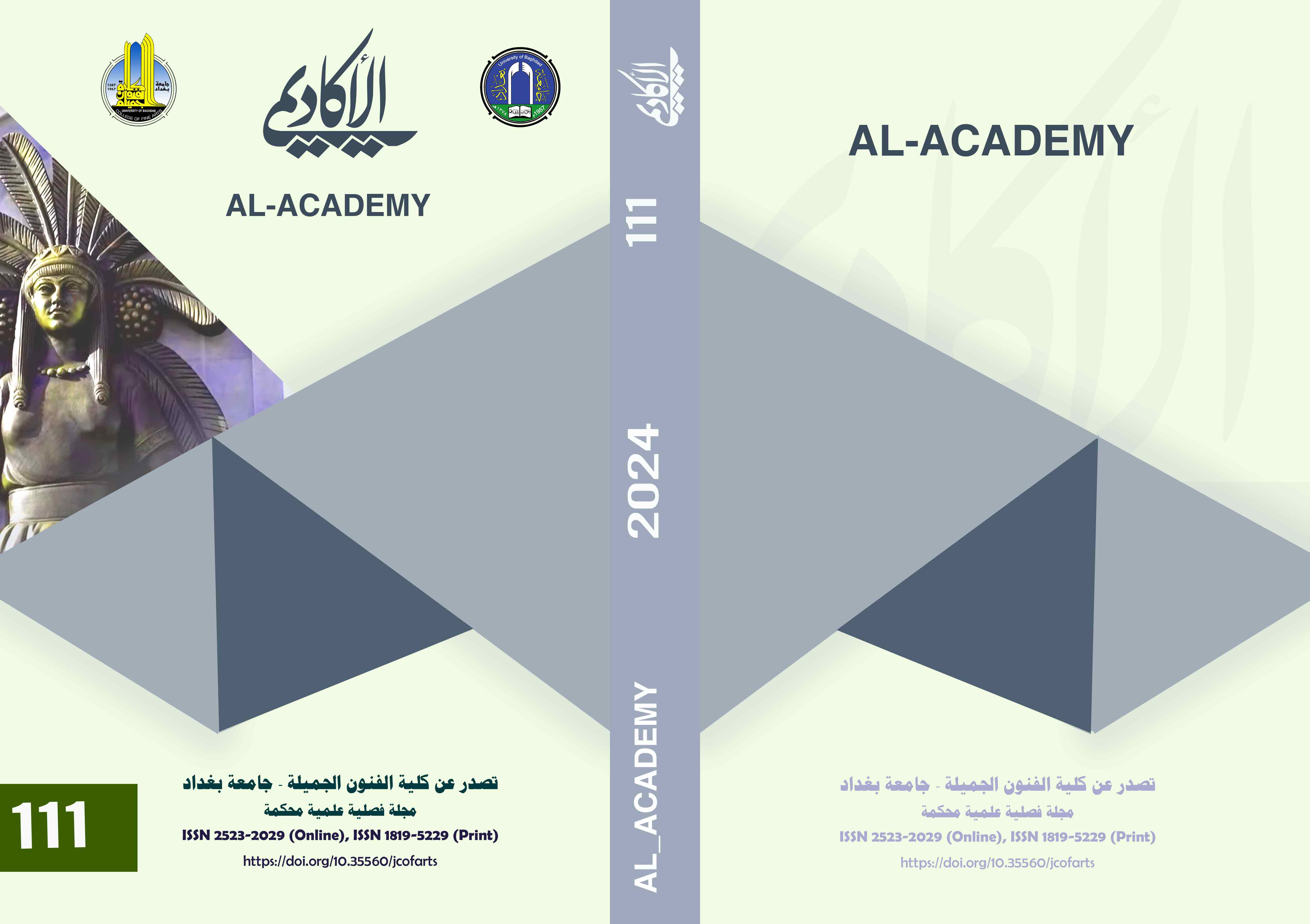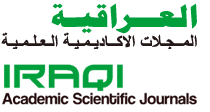أثر الذكاء الاصطناعي التوليدي (GAI)في مهارات التصميم الرقمي لدى طلبة الوسائط المتعددة في كلية الفنون والتصميم
DOI:
https://doi.org/10.35560/jcofarts1260الكلمات المفتاحية:
الذكاء الاصطناعي، التصميم الرقمي، الوسائط المتعددةالملخص
هدفت هذه الدراسة إلى الكشف عن أثر التدريس باستخدام أدوات الذكاء الاصطناعي التوليدي(GAI) في تحسين مهارات التصميم الرقمي لدى طلبة الوسائط المتعددة في كلية الفنون والتصميم في الجامعة الأردنية.
اتبعت هذه الدراسة المنهج شبه التجريبي، وتكون أفراد الدراسة من (38) طالبا وطالبة من طلبة كلية الفنون والتصميم في الجامعة الأردنية، وقد قسمت العينة إلى مجموعتين تجريبية وضابطة: المجموعة الأولى تجريبية وعددها (18) طالبا وطالبة درسوا باستخدام تطبيق تعليمي قائم على الذكاء الاصطناعي (Midjourny)، والمجموعة الثانية ضابطة وعددها (20) طالبا وطالبة درسوا بالطريقة الاعتيادية، واستخدم مقياس مهارات التصميم الرقمي (بطاقة تقييم منتج) في مادة أساسيات التصميم 2، وقد تم التحقق من صدقه وثباته.
كشفت النتائج عن وجود فروق ذات دلالة إحصائية عند مستوى الدلالة (α = 0.05) بين المتوسطات الحسابية للمجموعتين في الأداء البعدي لمهارات التصميم الرقمي لصالح أداء المجموعة التجريبية تعزى لطريقة التدريس باستخدام التطبيق القائم على الذكاء الاصطناعي(Midjourny).
وقد خلصت الدراسة إلى توصيات عده، منها اعتماد تطبيقات الذكاء الاصطناعي كاستراتيجية تعليمية لطلبة كلية الفنون والتصميم
المراجع
Abushawali, Mahmoud. (2016). Competencies in digital media for Jordanian graphic designers.
Al-Abbas, Nasser. (2018). Design visual creative, and graphic design skills. Saudi Meetings Industry Forum, Riyadh, Saudi Arabia.
Al-Halwani, Faten. (2022). The effectiveness of artificial intelligence to enrich the creative design of cartoon characters. International Journal of Artificial Intelligence in Education and Training, 2(1), 1-15.
Benthal, Jon. (2014), science and technology in Art Today, London, 3rd edition.
Bin Safi, Ruqaya. (2020). Application of artificial intelligence in the field of design.
Bridges, Amanda. (2022)., Identification of Perceived 21st Century Graphic Design Skills, Content Knowledge, and Tools Needed in an Effective University-Level Graphic Design Program. Education Dissertations and Projects. 32.
Cheng, Y. (2022). The requirements for graphic designers in 2021: Compare between students, educators, and industry professionals (Order No. 28867443). Available from ProQuest Dissertations & Theses Global; Publicly Available Content Database. (2665035228).
Haggag, Fathi. (2023). Using artificial intelligence techniques to create printing designs to enrich the aesthetic value of clothing design. Journal of Research in Specific Education 9(45), 2275-2331.
https://jalammar.github.io/illustrated-stable-diffusion/
https://www.annahar.com/arabic/section
https://www.midjourney.com/home
Imad, Mai. (2022). Digital design as a creative influence in university distance education. Journal of Arts and Humanities. (10), 176-191.
Ismail, Abdul Raouf. (2017). Artificial Intelligence Technology and its Applications in Education, (1st ed.), Cairo: World of Books.
Kaplan J. (2016). Artificial intelligence: what everyone needs to know. Oxford University Press.
Mira, Amal Kazem. (2019). Applications of artificial intelligence in education from the perspective of university teachers, research presented at the First International Scientific Conference for Human Studies, College of Education for Girls, University of Baghdad, Iraq.
Morsi, Ahmed. (2015). A Photoshop-based program for developing artistic design skills among secondary school students, Journal of the College of Education in Assiut, Egypt 31(5), 492-515.
Muhammad, Asmaa Al-Sayyid & Muhammad, Karima Mahmoud. (2020). Applications of artificial intelligence and the future of educational technology. 1st Edition. Arab Group for Training and Publishing. Cairo.
Pataranutaporn, P., Leong, J., Danry, V., Lawson, A. P., Maes, P., & Sra, M. (2022). AI-generated virtual instructors based on liked or admired people can improve motivation and foster positive emotions for learning. 2022 IEEE Frontiers in Education Conference (FIE). https://doi.org/10.1109/fie56618.2022.9962478
Qatami, Samir. (2018). Artificial intelligence and its impact on humanity, Afkar Magazine, Ministry of Culture, Hashemite Kingdom of Jordan, Towards a Civic Culture, 357, 13-40.
Salama, M. (2023). Morphogenetic and Digital Design in the era of image and visual art, Contemporary Visual Arts and Culture.
Shams, Naseeb. (2020). Artificial intelligence and its future repercussions on humans. Available on: https://www.arabthought.org/ar/researchcenter/ofoqelectronic-article-details?id=10006
Singh, G, Mishra, A. & Sagar, D. (2013). An overview of Artificial Intelligence, Journal of Sciences and Technology, 2(1), 1-4.
Tecuci, G. (2012). Artificial Intelligence, Wiley Inter Disciplinary Reviews Computational Statistics, 4(2), 168-180.
Waheed, S. (2023). Artificial intelligence techniques and tools and manifestations of change in the role of product designer, International Design Journal, Vol. 13 No. 2, (March 2023) pp 203-224.
التنزيلات
منشور
إصدار
القسم
الرخصة
الحقوق الفكرية (c) 2024 Ra’ed Jamal Saaideh, Suhair Abdu Allah Jaradat

هذا العمل مرخص بموجب Creative Commons Attribution 4.0 International License.













